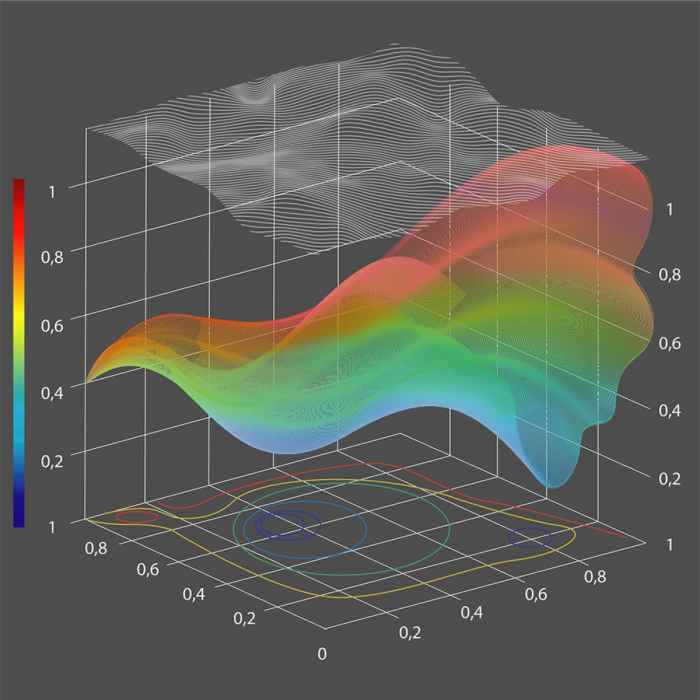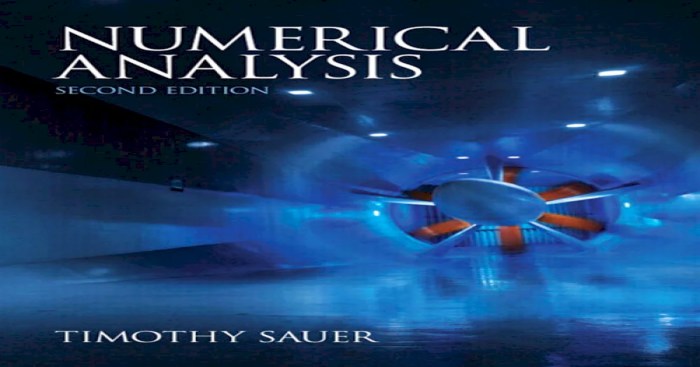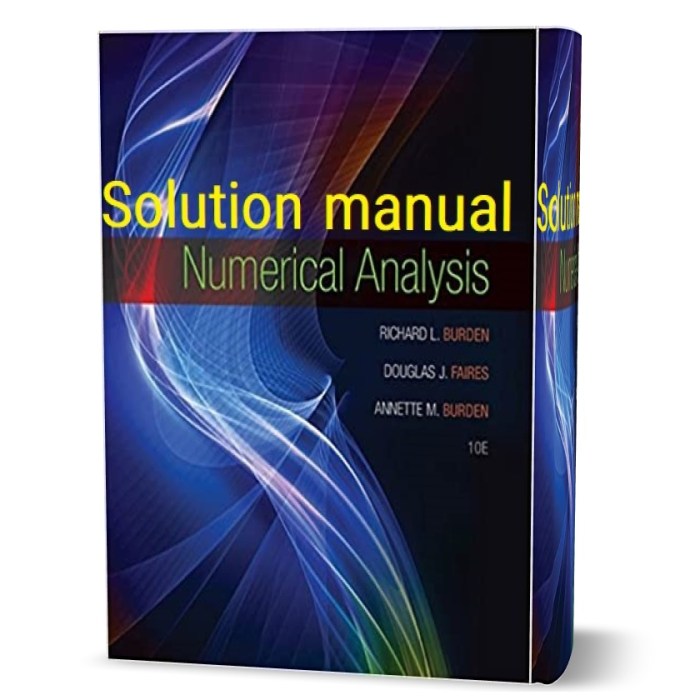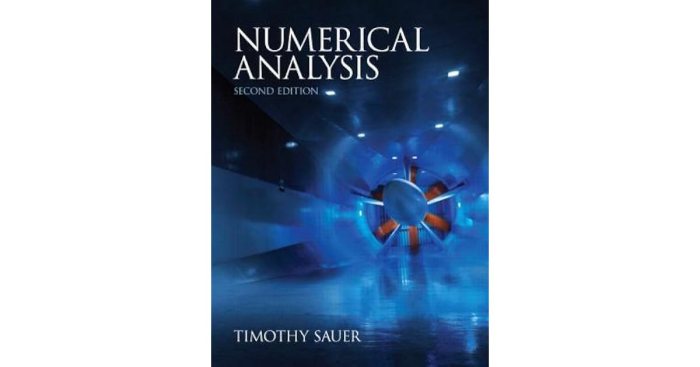Numerical analysis 3rd edition timothy sauer – Numerical Analysis, 3rd Edition by Timothy Sauer is a comprehensive and authoritative guide to the field of numerical analysis. This seminal work provides a thorough overview of the fundamental concepts, methods, and applications of numerical analysis, equipping readers with the knowledge and skills necessary to solve complex mathematical problems efficiently and accurately.
From introductory concepts to advanced techniques, Numerical Analysis, 3rd Edition covers a wide range of topics, including numerical linear algebra, numerical integration and differentiation, numerical solution of ordinary differential equations, and numerical solution of partial differential equations. The book’s clear and concise explanations, coupled with numerous examples and exercises, make it an invaluable resource for students, researchers, and practitioners alike.
1. Numerical Methods Overview: Numerical Analysis 3rd Edition Timothy Sauer

Numerical analysis is the study of algorithms for approximating the solutions of mathematical problems that cannot be solved exactly. It plays a crucial role in various scientific and engineering disciplines, providing efficient and reliable methods for solving complex problems that cannot be tackled analytically.
Numerical methods can be broadly classified into three main types:
- Iterative methods: These methods start with an initial guess and repeatedly refine the solution until a desired level of accuracy is achieved.
- Direct methods: These methods compute the solution in a finite number of steps without the need for iteration.
- Monte Carlo methods: These methods use random sampling to approximate the solution of a problem.
2. Numerical Linear Algebra

Numerical linear algebra is a branch of numerical analysis that deals with the numerical solution of linear systems, matrix operations, and eigenvalue problems. It has applications in various fields such as computer graphics, signal processing, and computational finance.
Matrix Operations
- Matrix addition and subtraction
- Matrix multiplication
- Matrix inversion
- Matrix decomposition (e.g., LU decomposition, QR factorization)
Linear Systems
- Gaussian elimination
- LU decomposition
- QR factorization
- Iterative methods (e.g., Jacobi, Gauss-Seidel)
Eigenvalues and Eigenvectors, Numerical analysis 3rd edition timothy sauer
- Power method
- QR algorithm
- Lanczos algorithm
3. Numerical Integration and Differentiation
Numerical integration and differentiation are fundamental operations in numerical analysis used to approximate integrals and derivatives of functions. These methods are widely used in scientific computing, engineering, and other fields.
Numerical Integration
- Trapezoidal rule
- Simpson’s rule
- Gaussian quadrature
- Monte Carlo integration
Numerical Differentiation
- Forward difference
- Backward difference
- Central difference
- Numerical differentiation using finite difference methods
4. Numerical Solution of Ordinary Differential Equations

Ordinary differential equations (ODEs) are equations that describe the rate of change of a function with respect to one or more independent variables. Numerical methods are used to approximate the solutions of ODEs when analytical solutions are not available.
Numerical Methods for ODEs
- Euler’s method
- Runge-Kutta methods
- Multistep methods
- Finite difference methods
- Finite element methods
Stability, Accuracy, and Convergence
- Stability analysis of numerical methods
- Accuracy and error estimation
- Convergence criteria
Choice of Numerical Method
- Factors to consider when choosing a numerical method
- Guidelines for selecting an appropriate method
5. Numerical Solution of Partial Differential Equations

Partial differential equations (PDEs) are equations that involve partial derivatives of a function with respect to multiple independent variables. Numerical methods are essential for solving PDEs, as analytical solutions are often intractable.
Numerical Methods for PDEs
- Finite difference method
- Finite element method
- Spectral method
- Boundary element method
Strengths and Weaknesses of Each Method
- Advantages and disadvantages of the finite difference method
- Strengths and limitations of the finite element method
- Pros and cons of the spectral method
Applications of Numerical Methods for PDEs
- Examples of real-world problems solved using numerical methods for PDEs
- Case studies in computational fluid dynamics, heat transfer, and other areas
FAQ Section
What is numerical analysis?
Numerical analysis is the study of algorithms for solving mathematical problems that are too complex to be solved exactly. Numerical methods are used in a wide range of applications, including engineering, physics, finance, and computer science.
What are the different types of numerical methods?
There are many different types of numerical methods, including iterative methods, direct methods, and Monte Carlo methods. Iterative methods are used to find approximate solutions to equations by repeatedly improving an initial guess. Direct methods are used to find exact solutions to equations by using a finite number of steps.
Monte Carlo methods are used to find approximate solutions to problems by using random sampling.
What is the difference between accuracy and precision?
Accuracy refers to how close a numerical solution is to the true solution. Precision refers to how close two numerical solutions are to each other. A numerical solution can be accurate but not precise, or precise but not accurate.